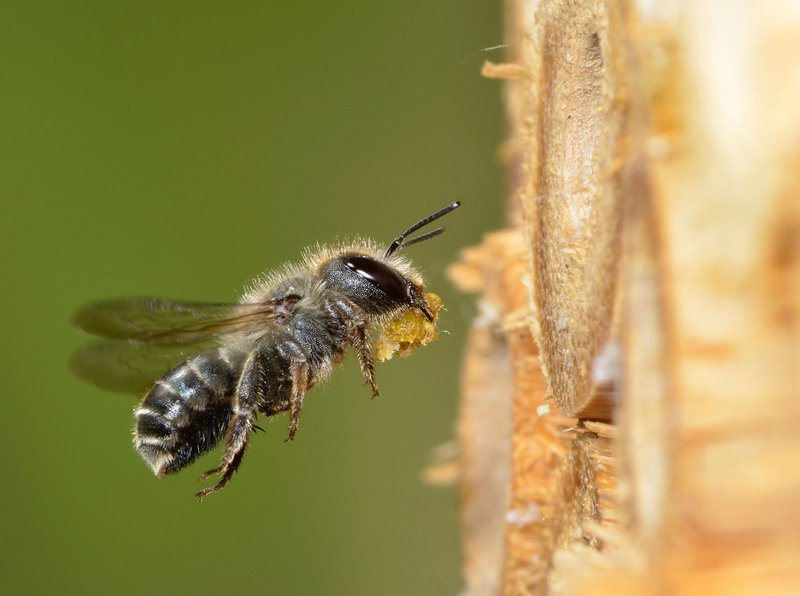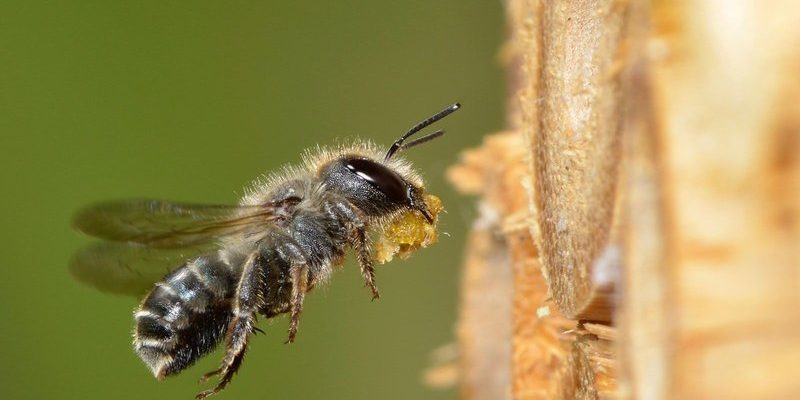
You might be wondering why you should care about mason bees. Well, they’re efficient pollinators, often outperforming honeybees in certain contexts. With their ability to lay eggs and pollinate in a single visit to a flower, they bring a lot to the table—like a friend who always picks the perfect restaurant. In this article, we’ll dive into some interesting facts about mason bees that might just inspire you to appreciate these tiny creatures more.
What Are Mason Bees?
Mason bees belong to the family Megachilidae, and there are over 140 species that fall under this category. These bees can be found around the world, particularly in North America, and they thrive in diverse habitats. You might picture a small, shimmering bee with a round body and fuzzy appearance. That’s pretty much spot on! Mason bees are usually smaller than honeybees, and they come in various colors, including blue, black, and copper.
Unlike honeybees, mason bees don’t live in hives. Instead, they prefer to make their nests in small cavities, such as holes in wood, bamboo stems, or even in the ground. They use mud to seal off their nests, which is how they got their name. Hence, you might think of them as construction workers, gathering materials to build safe homes for their young.
Furthermore, mason bees are known for their incredible pollinating abilities. They have unique hair on their bodies that picks up pollen as they move from flower to flower. This feature makes them exceptional at spreading pollen, often more so than their honeybee counterparts. It’s no wonder that gardeners and farmers are increasingly interested in promoting mason bees in their orchards and gardens!
The Mason Bee Life Cycle
The life cycle of a mason bee is truly remarkable. It all begins in the spring when the adult female emerges from her nest after wintering in a cold environment. This time of year is crucial since many flowers are blooming, providing the perfect food source. Here’s the thing: female mason bees are not only looking for nectar; they’re also searching for the right place to lay their eggs.
After finding a suitable nesting site, the female lays her eggs in small cells within the cavity, feeding each egg with a supply of pollen and nectar. She then seals the cells using mud. The eggs hatch after a few days, and the larvae consume the stored food until they’re ready to pupate. Eventually, they emerge as adult bees, continuing the cycle. Isn’t it neat how they manage to time everything so perfectly with nature’s rhythms?
The entire process from egg to adult takes about 2 to 3 months, depending on the species and environmental conditions. This relatively short life cycle allows mason bees to take full advantage of the spring bloom, and it’s one reason why they can be so effective as pollinators.
Mason Bees vs. Honeybees: What’s the Difference?
You might be thinking, “So why should I care about mason bees over honeybees?” That’s an excellent question! While both play significant roles in pollination, they have different lifestyles, behaviors, and impacts.
- Social Structure: Honeybees live in colonies and work together. Mason bees, on the other hand, are solitary creatures and raise their young independently.
- Pollination Behavior: Mason bees are highly efficient at pollinating plants, often visiting more flowers in a shorter time. They also tend to pollinate early in the season, when many crops are blooming.
- Nesting Habits: Honeybees construct intricate hives, while mason bees create small nests in natural cavities, using mud as a seal.
Engaging with mason bees can encourage biodiversity in your garden. They’re excellent pollinators and can help produce fruit and veggies. If you want to attract them, consider planting flowers that bloom early in the spring. They love plants such as willows, blueberries, and fruit trees. The more diverse your garden, the better for mason bees!
Creating a Mason Bee Habitat
If you’re interested in attracting mason bees to your garden, creating a welcoming habitat is key. Here’s how you can make your yard a mason bee haven:
1. Plant Native Flowers: Native plants provide the best food sources for mason bees. Choose a variety of flowers that bloom at different times to keep them fed throughout the growing season.
2. Provide Nesting Sites: You can buy commercially made bee houses or even create your own. Look for untreated wood and drill holes of varying diameters, as different species prefer different sizes.
3. Leave Some Mud: Mason bees need mud to seal their nests. If you have a small patch of bare soil, that can work perfectly—just ensure it gets damp during the spring!
4. Avoid Pesticides: Pesticides can harm mason bees and other beneficial insects. Use natural pest control methods whenever possible to keep your garden healthy.
By making a few changes in your garden, you’ll not only help mason bees thrive but also witness the bounty of flowers and vegetables flourish!
Fun Facts About Mason Bees
You might be surprised by some quirky facts about mason bees. Here are a few that highlight their unique characteristics and behaviors:
- Colorful Creatures: While many people imagine bees as yellow and black, mason bees come in shades of *blue and green*, thanks to their unique body structure. It’s like finding a hidden treasure in your backyard!
- Shorter Lifespan: Mason bees typically live for only a few weeks to a couple of months, focusing all their energy on nesting and pollination before they die. It’s a short but impactful life!
- Multiple Generations: In ideal conditions, a single female mason bee can produce up to 30 eggs, leading to many new bees in just one season. Talk about a family reunion!
Mason bees truly embody the beauty of nature’s design, proving that small creatures can have a giant impact on our planet.
Mason Bees in Your Garden: Why It Matters
So, why does all this matter? Well, mason bees contribute significantly to our environment by pollinating a variety of plants. They’re vital for food production, especially for crops that depend on pollination. By fostering mason bees, you’re not just planting flowers but also nurturing ecosystems.
Pollinators like mason bees help ensure we have fruits, vegetables, and nuts. The decline of pollinator populations can lead to fewer crops and higher food prices. If we all work together to support these populations, we can enjoy diverse and healthy harvests for years to come.
Incorporating mason bees into your gardening practices is about more than a pretty yard. It’s a way to help the environment and promote biodiversity.
In conclusion, mason bees are not just another little insect; they’re essential workers in our ecosystem. By learning about them and providing a supportive habitat, we can appreciate and benefit from their remarkable talents. So, go ahead and plant those flowers, create some nesting sites, and enjoy the delightful world of mason bees right in your backyard!

